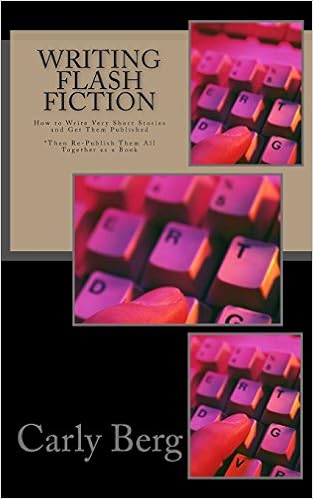*In accordance with the Federal Trade Commission’s 16 CFR, Part 255: “Guides Concerning the Use of Endorsements and Testimonials in Advertising, I am letting you know that I was paid for this review* Correction: I refunded Carly, and am instead doing a "fair and honest." My decision to give this book 3-stars has not changed based on this.
 Carly not only opens up this book by telling us why she is an authority when it comes to flash-fiction writing, but she lets other writers know that she understands what it feels like to be a new writer. The failures coupled with little success that you hope will one day become a larger success are a part of Carly’s narrative and motive for creating “Writing Flash Fiction.”
Carly not only opens up this book by telling us why she is an authority when it comes to flash-fiction writing, but she lets other writers know that she understands what it feels like to be a new writer. The failures coupled with little success that you hope will one day become a larger success are a part of Carly’s narrative and motive for creating “Writing Flash Fiction.”
The text takes on a colloquial, even conversational, tone. This is good because you feel as if you can more easily relate with the text, but all the extra asides also made me feel as if I was not listening to an authority on the subject matter, but rather a well-written blog post.I am personally not too sure about how I feel about the style of this book.
Berg spends the first few pages breaking down what flash-fiction is. As somebody with little knowledge on the genre, I felt as if I was given a complete and comprehensible understanding of the subject matter. Berg then goes on to make a point that permeates throughout the rest of her text:
“Once you get a routine going, stories happen regularly. We are creatures of habit and when your mind makes that connection between time, place, ritual, and writing, all you have to do is B.I.T.C.H. (Butt In The Chair, Honey) and stories occur. I’ve heard it takes three weeks to make a habit, which sounds about right to me. You don’t have to do it perfectly, just work at it and don’t give up. A routine followed halfway or a quarter of the way still gets you many more stories than you’d have otherwise.”
“Once you get a routine going, stories happen regularly. We are creatures of habit and when your mind makes that connection between time, place, ritual, and writing, all you have to do is B.I.T.C.H. (Butt In The Chair, Honey) and stories occur. I’ve heard it takes three weeks to make a habit, which sounds about right to me. You don’t have to do it perfectly, just work at it and don’t give up. A routine followed halfway or a quarter of the way still gets you many more stories than you’d have otherwise.”
Her main point is that, although she is giving you ideas on the subject matter and is giving prompts, a writer’s job is to create a routine out of writing. I wish that she had spent time explaining how people can go about doing this. That would have added a lot of value to this book.
Overall, I feel that this books is good for anybody who wants to write (not just flash-fiction writers). I also think that is only really helpful to new and inexperienced writers. A lot of the information (besides the information on flash-fiction itself) is common knowledge to most writers. I can see this book being used in an introductory writing course as a supplemental text for students to use when they're figuring out how to get their ideas onto the page.Basic components of writing (plot, character, POV, setting etc) are brought up and explained. This would be great for new writers who do not know these things. Berg also has a list of resources that writers can use (websites, magazines etc) to better their craft.
At the end of each chapter, Berg gives her readers a list of “actions,” things they should do to enhance their flash-fiction writing skills. I feel like these are the most useful parts of her book. It summarizes what was said in the chapter and tells you what to do to improve your writing with those main points in mind.
Overall, I would consider this book to be concise and most likely helpful to new writers.
Buy it on Amazon.
Buy it on Amazon.
No comments:
Post a Comment